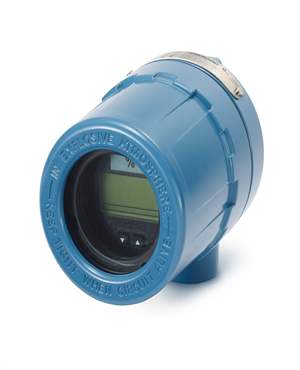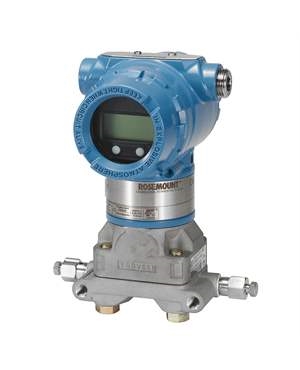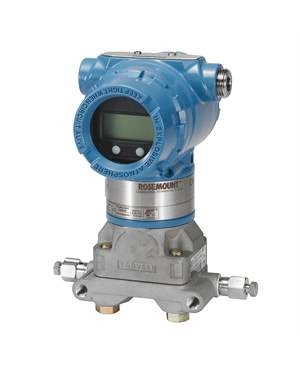Single Acting vs. Double Acting Positioners: Pros and Cons
Brian Craig
August 23, 2023
In the world of industrial automation, where precision and efficiency are paramount, positioners play a crucial role in ensuring that machinery and equipment perform their designated tasks with utmost accuracy. Positioners are devices designed to control the position of a mechanical element, typically a valve or an actuator, in response to a control signal. In essence, they bridge the gap between the digital control signals used in automation systems and the physical movement of industrial machinery.
By precisely adjusting the position of valves or actuators, positioners ensure that processes run smoothly, consistently, and with the desired level of accuracy. In this article, we delve into the realm of positioners, with a particular focus on the battle between single acting and double acting positioners.

Importance of Positioners in Industrial Applications
Imagine a scenario in a petrochemical plant where the flow of volatile chemicals must be precisely controlled to ensure safe and efficient operations. A minor error in valve positioning could lead to catastrophic consequences. This is where positioners step in. From oil refineries to pharmaceutical production lines, from power plants to food processing facilities, positioners are omnipresent behind the scenes, orchestrating the dance of industrial machinery.
Overview of Single Acting and Double Acting Positioners
Before we dive into the pros and cons of each type, let's briefly understand the fundamental differences between single acting and double acting positioners.
- Single Acting Positioners: These positioners use a single pneumatic signal to control the position of the actuator or valve. When the control signal changes, the positioner adjusts the position accordingly. Single acting positioners are often known for their simplicity and cost-effectiveness.
- Double Acting Positioners: In contrast, double acting positioners utilize both the positive and negative pneumatic signals to control the actuator's position. This enhanced control mechanism allows for finer adjustments and improved responsiveness, making them suitable for applications that demand high precision.
Understanding Single Acting Positioners
Single acting positioner involves a pneumatic control signal that corresponds to the desired position of the actuator. This signal is compared with the actual position of the actuator, and the positioner's internal mechanism adjusts the air pressure to the actuator accordingly, driving it to the desired position. The positioner maintains this balance by regulating the air pressure in response to any deviations between the desired and actual positions.
A. Components of a single acting positioner typically include:
- Input Signal Interface: This is where the control signal from the automation system is received.
- Pneumatic Control Unit: The heart of the positioner, which manages the airflow and pressure adjustments.
- Feedback Mechanism: Sensors that provide information about the current position of the actuator.
- Output Connection: This is where the positioner interfaces with the actuator or valve it's controlling.
B. Pros of Single Acting Positioners
- Simplicity and Cost-effectiveness: Single acting positioners are known for their straightforward design. Their simplicity not only translates to lower initial costs but also contributes to ease of installation and maintenance.
- Lower Air Consumption: With only one pneumatic signal involved, single acting positioners generally consume less air compared to their double acting counterparts. This can lead to energy savings in the long run.
- Reliability in Certain Applications: Single acting positioners are well-suited for applications where high precision isn't critical. In scenarios where a minor variation in positioning won't significantly impact the process outcome, these positioners can provide reliable control.
C. Cons of Single Acting Positioners
- Limited Control Accuracy: Due to the reliance on a single pneumatic signal, single acting positioners may struggle to achieve the same level of precision as double acting positioners.
- Reduced Responsiveness: Single acting positioners might exhibit slightly slower response times compared to their double acting counterparts, which can be a concern in situations requiring rapid adjustments.
- Incompatibility with Complex Systems: As processes and control systems become more intricate, the limitations of single acting positioners become apparent. They may struggle to keep up with the demands of highly complex industrial setups.
Exploring Double Acting Positioners
In a double acting positioning system, two pneumatic signals are used to regulate the movement of the actuator. These signals work in tandem to drive the actuator to the desired position, while the positioner constantly adjusts the air pressure to maintain this alignment.
A. Operational Mechanism and Key Components
- Control Signal Input: The automation system sends dual pneumatic signals, one positive and one negative, to dictate the desired position of the actuator.
- Pressure Regulating Unit: This component meticulously manages the air pressure sent to the actuator, ensuring smooth movement and precise positioning.
- Dual Feedback Mechanism: Feedback sensors relay information about the actuator's position, allowing the positioner to make instantaneous adjustments.
- Output Interface: The positioner interfaces with the actuator or valve to control its movement.
B. Pros of Double Acting Positioners
- Enhanced Control Accuracy: The dual pneumatic signals enable double acting positioners to achieve exceptional precision in positioning, making them ideal for applications that demand high-level accuracy.
- Improved Response Time: The ability to control both positive and negative signals results in faster response times compared to single acting positioners. This attribute is crucial in time-sensitive processes.
- Compatibility with Complex Control Systems: Double acting positioners shine in intricate industrial environments where systems involve numerous interconnected components. They are more adaptable to complex control architectures.
C. Cons of Double Acting Positioners
- Higher Air Consumption: The utilization of two pneumatic signals increases air consumption, which can impact energy efficiency and operating costs over time.
- Increased Complexity and Cost: The added sophistication of double acting positioners comes with a higher upfront cost and increased complexity in terms of installation and maintenance.
- Potential Reliability Concerns in Certain Situations: While generally reliable, double acting positioners might encounter reliability challenges in specific conditions due to their more intricate design. In applications with stringent reliability requirements, careful consideration is essential.
Selecting the Right Positioner for Your Application
When it comes to selecting between single acting and double acting positioners, a thoughtful decision can significantly impact the efficiency, precision, and overall success of your industrial application. To guide your choice, consider the following factors:
Application Requirements:
- Single Acting: If your application doesn't demand extreme precision and minor variations in positioning won't affect the outcome, a single acting positioner might suffice.
- Double Acting: For processes where precision is paramount and even minor errors can lead to significant repercussions, a double acting positioner is better equipped to meet stringent requirements.
Control Precision Needed:
- Single Acting: If your operation can tolerate some degree of positioning inaccuracy, single acting positioners could provide a cost-effective solution.
- Double Acting: When precision is non-negotiable, double acting positioners offer the necessary accuracy to maintain consistent control.
System Complexity and Integration:
- Single Acting: In less complex systems, single acting positioners are straightforward to integrate and maintain.
- Double Acting: For intricate systems with numerous interdependencies, double acting positioners provide the adaptability required for seamless integration.
Operational Costs and Budget:
- Single Acting: With lower upfront costs and reduced air consumption, single acting positioners might fit more modest budgets.
- Double Acting: While the initial investment is higher, the potential for improved efficiency and reduced errors can justify the expense over time.
Based on your evaluation, select the positioner type that best aligns with your application's needs and priorities. By carefully considering these factors and following a systematic decision-making process. At The Transmitter Shop, we offers one-stop solution for all your control valve requirements. Among the many well-known brands, Fisher is one of the leading manufacturers of valve positioners. We have a wide range of valve positioners / controllers manufactured by Fisher. If you have any questions, please contact us.
Related Posts
- Causes & Solutions of Annoying Noise from Control Valves
- Understanding Industrial Control Valves and their Types
- All Important Questions on Control Valves Answered
- 3 Common Control Valve Maintenance Practices
- Know Everything About the Benefits, Applications, Types, and Automation of Control Valves
- How to Select the Right Control Valve for Your Process?
- Calibration of Control Valve Positioner: The Process Discussed
- Control Valve Actuators: Different Types and Failure Modes Discussed
- Calibration Guide for Fisher 3582 Pneumatic Positioner
- How to Do the Periodical Inspection and Maintenance of the Control Valve?
- Temperature Control Valve – Definition and Working Principle
- Reasons to Choose Remanufactured Instrumentation and Control Valves
- Single Acting vs. Double Acting Positioners: Pros and Cons
- Complete Hydrogen Gas Safety and Measurement Solutions
- Steam Boiler Drum Level Measurement A Comparison of Control System Technologies
- Furnace Flame Sensor Faults Everything You Need to Know for Safe Operation
- Comparison between Multi Valve Manifolds Block Valves and Bleed Valves
- Pneumatic Pressure Controllers: A Safe Choice for Hazardous Areas
- Furnace Flame Sensor Faults Everything You Need to Know for Safe Operation
- Pneumatic Pressure Controllers: A Safe Choice for Hazardous Areas
- How Can Greenhouse Gas Emissions Be Reduced?
- A Practical Guide to Vacuum Measurement and Operation
- Understanding Electrochemical Detection: Principles, Techniques and Environmental Application
QUICK ENQUIRY







